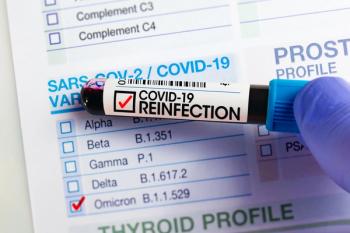
- August 2021 Immunization Supplement
The Pharmacy as the Center of Immunization Services for the Entire Family
Expanding services and revenues for pharmacies while improving public health and reducing stress on parents and others in the health care system is a win-win-win situation.
Pharmacists and pharmacy interns have been vaccinating huge swaths of the American public for the past 2 decades.1 In the last year, pharmacy technicians have joined the ranks, and pharmacy at large has been instrumental in the roll-out of the COVID-19 vaccines.2 Several federal and state regulatory changes, which have recently been solidified, were launched in response to the state of emergency. These changes alter the landscape of pharmacy-based immunizations from 1 that focused on adult influenza to 1 where the community pharmacy can be the vaccination hub for the entire family. Specifically, the Public Readiness and Emergency Preparedness Act allows pharmacists, pharmacy interns, and some pharmacy technicians to administer vaccines to persons 3 years or older.3 Many states followed this federal change with state legislative and regulatory changes of their own that mimic the federal regulations, therefore clearing hurdles (such as requirements of prescriptions) for pharmacies to immunize an even broader demographic.4
Vaccinations in the United States are mainly provided at primary care offices, public health facilities, hospitals, and pharmacies. Collaborating with each of these location types may be the key to maximizing a pharmacy’s ability to be the vaccine hub for the family. Infant and very early childhood vaccines (0-3 years of age) may or may not make sense for the pharmacy based on state regulations, relationships with area pediatricians, and staff willingness to care for these small humans. Childhood and adolescent vaccines are, however, great opportunities for pharmacies to build relationships with pediatricians, especially to finish vaccine series. These opportunities include vaccines for human papillomavirus and meningococcal (MenACWY, MenB) strains.5 Additionally, vaccine series are great opportunities for collaboration with public health departments, as most pharmacies are more easily accessible than health department offices. Building an arrangement where people who receive first doses at the health department and second (and perhaps third) doses at a community pharmacy can be productive for the pharmacy, the health department, and the patient. Preferably, these arrangements exist in a format where the pediatrician or public health office can help the patient set up the next appointment at the pharmacy prior to the patient leaving the office where they received their initial dose. This process can manifest itself as an e-script from the pediatrician with a request to schedule a follow-up dose, a direct call from the public health official to the pharmacy to help the patient get scheduled, or training of the hospital discharge staff on how to register a patient for an appointment at their pharmacy. Moreover, even if there is no formal relationship between these entities, knowing the plans for a family-wide vaccine program is important. Collaborating with these groups may identify needs in the community that could have been missed, goals of other health care providers that a pharmacy can assist with, and documentation requests the pharmacy may not have expected that help make other health care providers’ lives easier.
One such documentation request may be for all vaccines to be reported to the state immunization registry. Each state operates one of these programs that are simultaneously free for pharmacies to report to and may support bi-directional requests.6 Bidirectionality can assist in vaccine administration timelines and identify gaps in a patient’s vaccine history. Integrating the “pull” function of vaccine registry data into medication therapy management programs and appointment-based model programs in pharmacies can effectively and efficiently screen existing patients for missing vaccines that may be recommended.
One of these recommended vaccines is the Pfizer BioNTech COVID-19 vaccine, which has been authorized for the 12- to 15-year-old age group since early May 2021.7 Additionally, the Moderna vaccine is also pursuing FDA authorization in this age group, and clinical trials for the next age ranges have shown positive results.8 Overall, the need for vaccination against SARS-CoV-2 in these age groups presents the perfect opportunity for a pharmacy to expand into pediatric and adolescent vaccinations.
When planning an expansion into pediatric and adolescent vaccines, a few logistical concerns need to be addressed.9 First, assure a protocol exists for each pediatric vaccine and that each pharmacy staff member who works in this new expanded program is trained on the corresponding protocol. Different from existing protocols for adult vaccinations, this protocol will have to tackle parental consent. Addressing frequently asked questions in the protocol and standard operating procedure will provide clear instruction for the entire team and avoid frustrating situations of miscommunication. These questions may include: “Does the parent have to be present?” “If a nonparent is the legal guardian, what level of proof needs to be provided?” and “Does a parent need to be present for a second dose if they were there for the first and have already signed a consent document?”
Second, space requirements in the pharmacy might differ because every child coming in for a vaccine will be accompanied by at least 1 parent/guardian, and many may come with both parents plus siblings. Also, some might be comfortable sitting on laps or small, child-sized chairs, and at least a few will want to make sure their favorite stuffed animal has a safe place, too. As such, having a large enough space that can be flexible for these situations is vital to a successful pediatric vaccination program. Third, since several of these vaccines are given in a series requiring multiple doses, a pharmacy should have an easy and reliable way to schedule follow-up appointments for patients at the point of the vaccination. Finally, a pharmacy may need a few different supplies for pediatric vaccines, including shorter needles (a 5/8-in needle is recommended for intramuscular vaccines for some ages),10 colorful or character bandages (technique to calm an anxious child or engage a nervous sibling: have them hold the bandage for you while you administer the vaccine), and some sort of award for the child. (I wonder if kids could love xylitol lollipops as much as my cavity-laden mouth loved the sugary ones when I was little?)
The CDC’s Vaccines for Children (VFC) Program11 presents an important opportunity for pharmacies and an important operational consideration when launching a pediatric vaccination program. VFC provides free vaccines for eligible children (Medicaid beneficiaries, uninsured, underinsured, and American Indians/Alaskan Natives) via distribution of CDC-acquired vaccines through state public health departments. Comparatively, the COVID-19 vaccine distribution program12 mirrors many aspects of the VFC program, including vaccine inventory provided at no-charge to the pharmacy and comprehensive documentation and tracking requirements. The VFC program is an important operational consideration as many state Medicaid programs and their managed care organizations will not pay for non-VFC program vaccines, limiting a pharmacy’s potential market if the pharmacy isn’t able to enroll as a VFC provider. If a pharmacy can enroll as a VFC provider, they can be confident that a large percentage of children will have access to free vaccines either through the patient’s commercial insurance or through the VFC program.13
Over the past several decades and especially the past several months, pharmacy has cemented its place in the vaccination system. The next months and years potentially bring the opportunity for pharmacies to make a similar difference in the pediatric vaccination space. Expanding services and revenues for pharmacies while improving public health and reducing stress on parents and others in the health care system is a win-win-win situation, not just a shot in the arm. For reference, a checklist of points to consider before adding pediatric vaccine administration at your pharmacy in listed in the TABLE.6,10,11,14
Kevin Day, PharmD, is the president of Day’s Miami Heights Pharmacy in Cincinnati, Ohio.
REFERENCES
- Hogue MD, Grabenstein JD, Foster SL, Rothholz MC. Pharmacist involvement with immunizations: a decade of professional advancement. J Am Pharm Assoc (2003). 2006;46(2):168-182. Published correction appears in J Am Pharm Assoc (Wash DC). 2006;46(3):308. doi:10.1331/154434506776180621
- PTCB launches immunization credential for pharmacy technicians. Pharmacy Technician Certification Board. February 17, 2021. Accessed July 9, 2021. https://www.ptcb.org/news/ptcb-launches-immunization-credential-for-pharmacy-technicians
- Guidance for PREP Act coverage for qualified pharmacy technicians and state-authorized pharmacy interns for childhood vaccines, COVID-19 vaccines, and COVID-19 testing. US Department of Health and Human Services. October 20, 2020. Accessed July 9, 2021. https://www.hhs.gov/ sites/default/files/prep-act-guidance.pdf
- COVID-19: Federal PREP Act actions. National Alliance of State Pharmacy Associations. March 15, 2021. Accessed July 9, 2021. https://naspa.us/ resource/federal-prep-act-actions/
- Table 1. Recommended child and adolescent immunization schedule
for ages 18 years or younger, United States, 2021. CDC. February 12, 2021. Accessed July 9, 2021. https://www.cdc.gov/vaccines/schedules/hcp/imz/ child-adolescent.html - Contacts for IIS immunization records. CDC. June 7, 2019. Accessed July 9, 2021. https://www.cdc.gov/vaccines/programs/iis/contacts-locate-records. html#state
- Coronavirus (COVID-19) update: FDA authorizes Pfizer-BioNTech COVID-19 vaccine for emergency use in adolescents in another important action in fight against pandemic. News release. FDA. May 10, 2021. Accessed July 9, 2021. https://www.fda.gov/news-events/press-announcements/ coronavirus-covid-19-update-fda-authorizes-pfizer-biontech-covid-19-vaccine-emergency-use
- Adams K. How Pfizer, Moderna & J&J are testing their vaccines in children. Becker’s Hospital Review. July 5, 2021. Accessed July 9, 2021. https://www. beckershospitalreview.com/pharmacy/how-pfizer-moderna-j-j-are-testing-their-vaccines-in-children.html
- Hanretty A, Rose L. New HHS regulations expand pharmacists’ role in childhood immunizations. Pharmacy Times®. November 16, 2020. Accessed July 9, 2021. https://www.pharmacytimes.com/view/new-hhs-regulations-expand-pharmacists-role-in-childhood-immunizations
- Vaccine administration. CDC. May 4, 2021. Accessed July 9, 2021. https:// www.cdc.gov/vaccines/hcp/acip-recs/general-recs/administration.html
- Vaccines for Children Program (VFC). CDC. February 16, 2016. Accessed July 9, 2021. https://www.cdc.gov/vaccines/programs/vfc/index.html
- Key things to know about COVID-19 vaccines. CDC. Updated June 25, 2021. Accessed July 9, 2021. https://www.cdc.gov/coronavirus/2019-ncov/vaccines/keythingstoknow.html?CDC_AA_refVal=https%3A%2F%2Fwww.cdc. gov%2Fcoronavirus%2F2019-ncov%2Fvaccines%2F8-things.html
- Cole M. The Vaccines for Children Program (VFC). National Center for Health Research. Accessed July 9, 2021. https://www.center4research.org/ vaccines-children-program-vfc/
- Vaccine Storage and Handling Toolkit. CDC. July 11, 2019. Accessed July 26, 2021. https://www.cdc.gov/vaccines/hcp/admin/storage/toolkit/index.html
Articles in this issue
about 4 years ago
mRNA Vaccines: A Look at What's to Comeabout 4 years ago
Catching Up on Pediatric Well Visits and Vaccinations in Fall 2021Newsletter
Stay informed on drug updates, treatment guidelines, and pharmacy practice trends—subscribe to Pharmacy Times for weekly clinical insights.


















































































































































































































